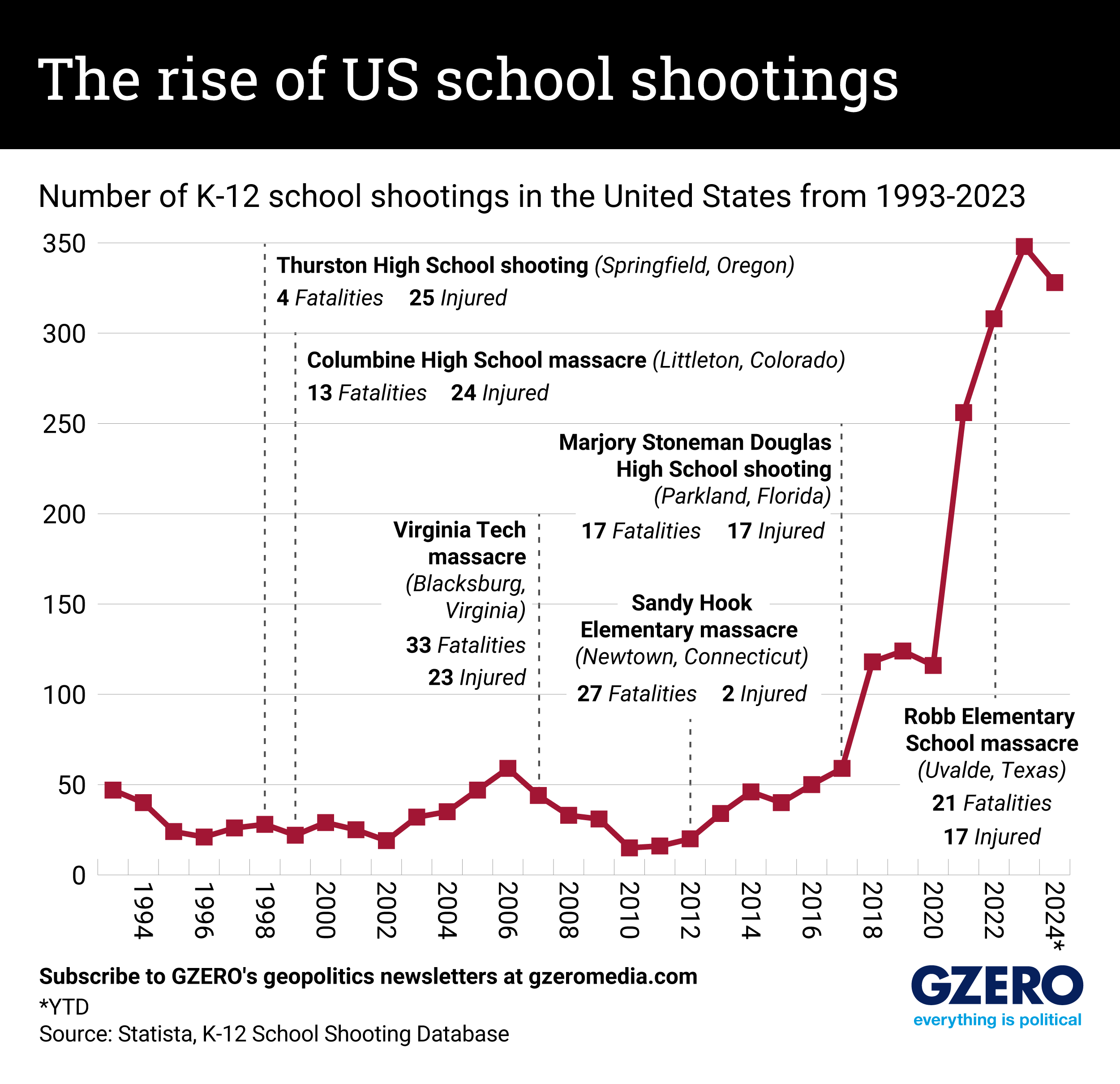April 18, 2024
Saturday marks 25 years since the mass shooting at Columbine High School in Littleton, Colorado. The attack in which two students used high-powered rifles to murder 12 of their classmates and a teacher before killing themselves was the largest school shooting in US history at the time.
It was also the first to be covered extensively in real-time by cable news, and it set off a national debate about gun violence, as well as the impact of bullying, video games, and prescription drugs on teen mental health.
A quarter of a century later, those debates continue — what’s different is that the frequency of school shootings has surged, increasing nearly sevenfold over the past decade alone.
Although deaths from these kinds of attacks account for only about 1% of total firearm fatalities, their rise tracks a broader increase in gun homicides and suicides that began during the pandemic in 2020.
Here is a look at the rise of school shootings in America beginning in the early 1990s.
More For You
- YouTube
It's one of the few sources Americans across the political spectrum still rely on.
Most Popular
Think you know what's going on around the world? Here's your chance to prove it.
America’s new National Security Strategy confirms what Europeans have feared for months: Washington now sees a strong, unified European Union as a problem to be solved, not an ally to be supported.
Sports inspire greatness, determination, and resilience — both on and off the field. Bank of America is proud to celebrate the achievements of and uplift communities through the power of sports. Learn more about how Bank of America supports athletes in life and in the game.
© 2025 GZERO Media. All Rights Reserved | A Eurasia Group media company.
